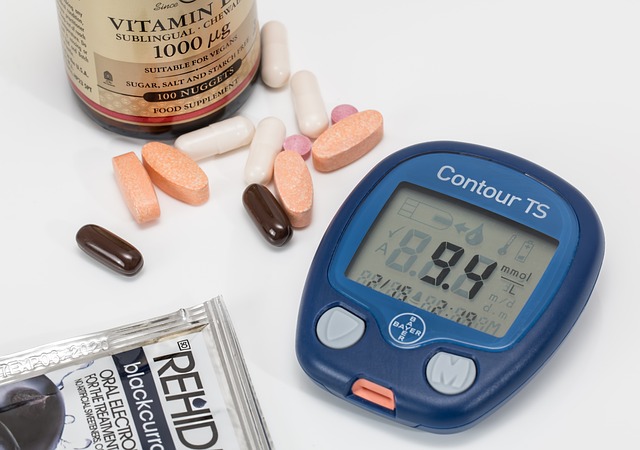Understanding Diabetic Retinopathy and the IGF Connection

Diabetic retinopathy (DR) stands as a major cause of preventable blindness globally, arising as a microvascular complication of diabetes that damages the light-sensitive retina. While high blood sugar (hyperglycemia) is the primary culprit, compelling evidence points to the Insulin-Like Growth Factor (IGF) signaling pathway playing a pivotal, multifaceted role in DR's onset and progression. This article explores the intricate link between the IGF system (or 'axis') and DR, shedding light on potential therapeutic strategies that target this critical pathway.
The IGF System: Key Players and Their Functions
The IGF system is a complex cellular communication network. It includes two primary signaling molecules (ligands: IGF-1 and IGF-2), two main receptors they bind to (IGF-1R and IGF-2R), a family of six specialized IGF-binding proteins (IGFBPs 1-6) that regulate IGF availability, and enzymes (IGFBP proteases) that break down these binding proteins. The IGF-1 receptor (IGF-1R), a receptor tyrosine kinase, is central to many IGF-1 actions. When IGF-1 binds to IGF-1R, it triggers a cascade of intracellular signals, primarily through the PI3K/Akt and MAPK pathways. These signals are vital commands influencing whether cells grow, divide, specialize, or survive.
How IGF Signaling Goes Awry in Diabetic Retinopathy
In the context of diabetes and DR, the IGF system becomes dysregulated in complex ways. Early in the disease, particularly in proliferative DR (PDR), elevated local levels of IGF-1 can promote harmful retinal blood vessel growth (angiogenesis) and increase vessel leakage. However, the situation can paradoxically shift. Prolonged high blood sugar and developing insulin resistance might lead to IGF-1 resistance in certain retinal cells (like neurons), potentially impairing their survival and contributing to nerve damage seen in both non-proliferative (NPDR) and PDR stages. The balance of IGFBPs is also disrupted; for example, increased levels of IGFBP-3 are often found in DR, which can 'mop up' free IGF-1, reducing its ability to signal through IGF-1R and potentially altering cellular responses.
Conceptual mathematical models can help illustrate potential changes in IGF-1 levels. A highly simplified model might represent the concentration of available IGF-1, \(I(t)\), over time with a differential equation:
\frac{dI(t)}{dt} = k_{prod} - (k_{degrad} + k_{bind}) I(t)Here, \(k_{prod}\) represents the effective production/release rate, while \(k_{degrad}\) and \(k_{bind}\) represent degradation and binding (e.g., to IGFBPs) rates, respectively. In diabetes, changes in these parameters due to factors like hyperglycemia, inflammation, or altered IGFBP levels can disrupt the normal balance (homeostasis) of IGF-1 activity.
Fueling the Fire: IGF-1 and Retinal Angiogenesis
A defining and dangerous feature of advanced PDR is angiogenesis – the growth of fragile, leaky new blood vessels in the retina. These vessels can bleed, cause scarring, and lead to retinal detachment and severe vision loss. IGF-1 is a potent stimulator of this process. It encourages the proliferation, movement, and survival of endothelial cells (the cells lining blood vessels). Critically, IGF-1 boosts the production of Vascular Endothelial Growth Factor (VEGF), another major driver of angiogenesis often triggered by retinal ischemia (lack of oxygen) in DR. Furthermore, IGF-1 can increase matrix metalloproteinases (MMPs), enzymes that break down the surrounding tissue structure, allowing new vessels to invade.
Targeting the IGF Axis: Emerging Therapeutic Strategies for DR

Given the significant role of disrupted IGF signaling in DR, interfering with this pathway presents a promising therapeutic angle, potentially complementing existing treatments like anti-VEGF therapy. Key strategies being explored include:
- **IGF-1R Blockers:** Developing small molecule drugs or monoclonal antibodies designed to specifically inhibit the activation of the IGF-1 receptor.
- **IGF-1 Neutralizers:** Using antibodies that bind directly to IGF-1, preventing it from docking with and activating IGF-1R.
- **IGFBP Modulation:** Investigating ways to restore the normal balance and function of IGFBPs, thereby controlling the amount of free, active IGF-1 available to cells.
- **Combination Therapies:** Strategically combining anti-VEGF agents (the current standard for PDR) with therapies targeting the IGF pathway, aiming for a more comprehensive blockade of pro-angiogenic and pro-inflammatory signals.
Looking Ahead: Research and Future Directions
While progress has been made, fully understanding the intricate dance between the IGF system and DR requires more research. Key areas include pinpointing the precise roles of different IGFBPs at various disease stages, discovering new drug targets within the complex IGF signaling cascade, and identifying biomarkers related to IGF signaling that could predict disease progression or treatment response. Ultimately, the goal is to develop more personalized and effective treatments. Rigorous clinical trials are essential to evaluate the safety and efficacy of emerging IGF-targeted therapies for patients with diabetic retinopathy.